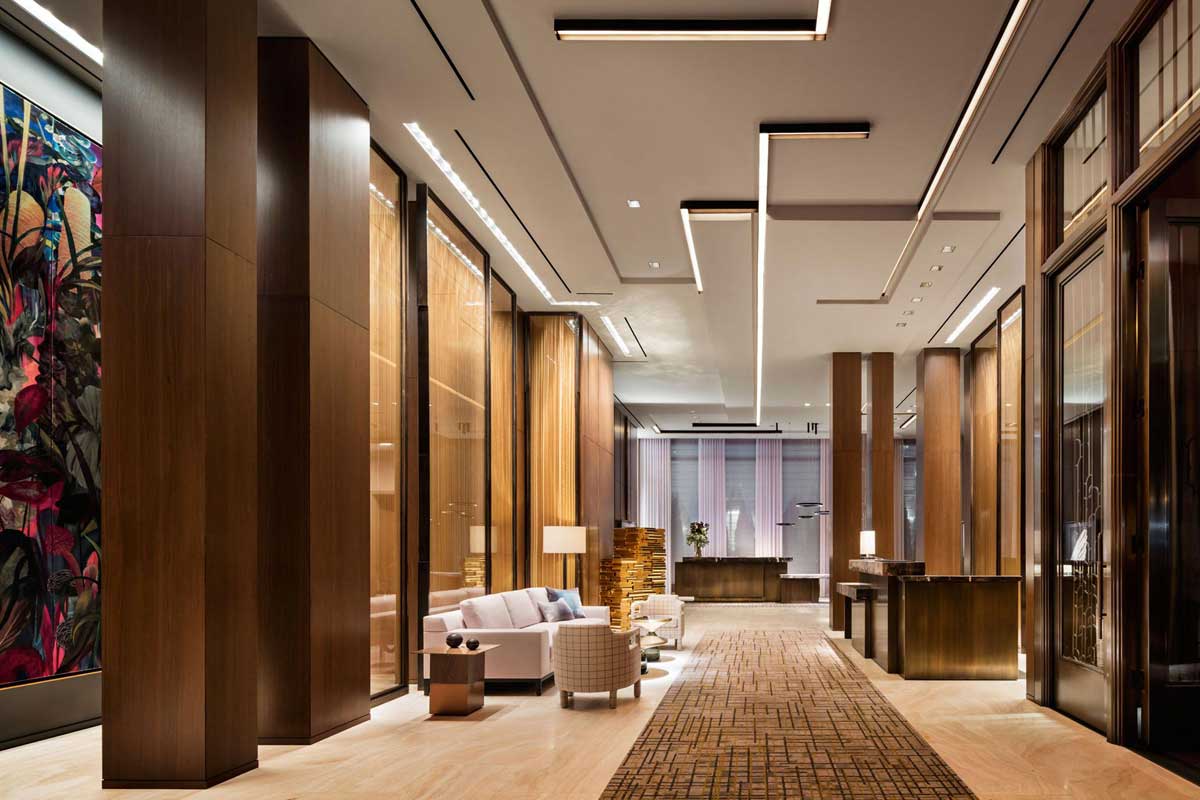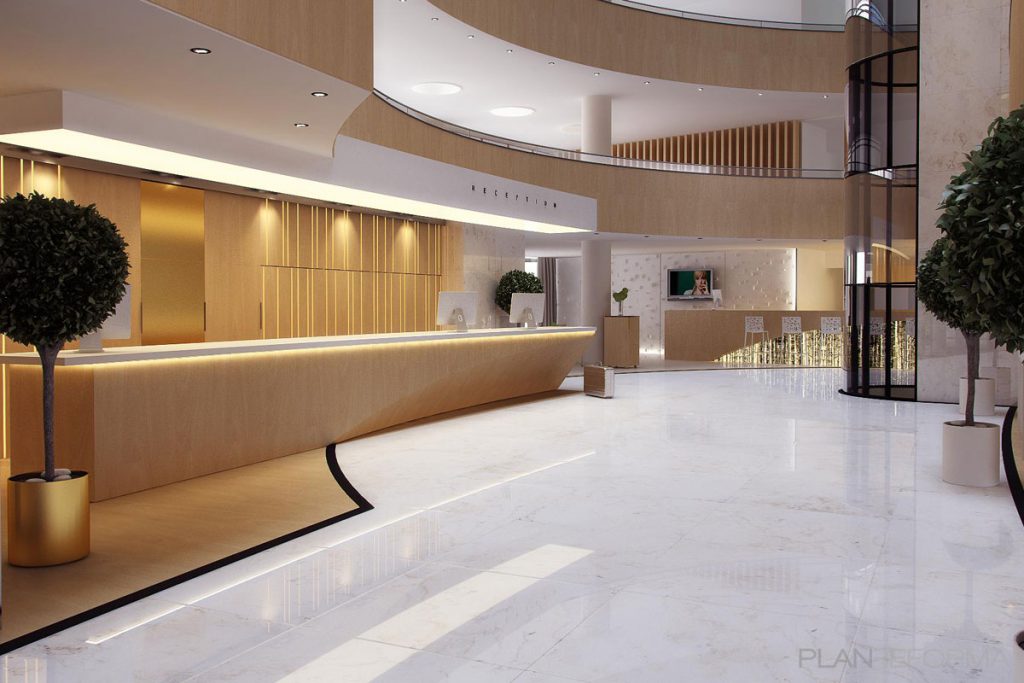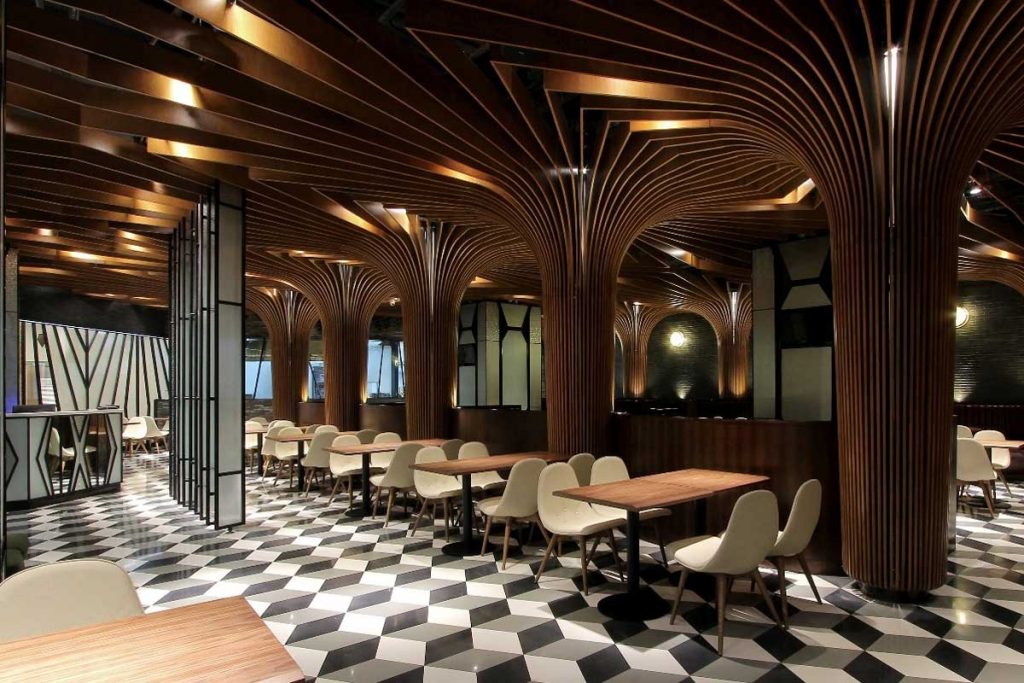Restaurant and hotel patrons have never had higher standards, expecting not only excellent service but also a memorable environment. As the focus on customer experience grows, hospitality businesses are weaving in the latest design trends to create spaces that reflect and enhance guests’ lifestyles, all while aiming to exceed expectations.
The hospitality industry—encompassing hotels, bars, and restaurants—places a premium on aesthetics, with spaces such as reception areas, lobbies, restrooms, dining areas, hallways, and dance floors all designed to impress. The tiles used in these settings play a critical role in achieving a cohesive look, with a demand for contemporary styles and sleek, modern finishes.
To help inspire your next project, here are three leading tile trends in the hospitality sector, along with a selection of Tileoptima products that can be combined with each trend to create truly stunning interiors.
Bringing the Outdoors In
A notable trend in the hospitality sector is the integration of outdoor elements into indoor spaces. Restaurants, hotel lobbies, and corridors are now incorporating all-season covered terraces, lush indoor plants, rattan furniture, indoor waterfalls, and large panoramic windows to create a natural and refreshing ambiance. This trend blurs the lines between indoor and outdoor environments, providing guests with a unique experience that connects them with nature.
To achieve a seamless ‘indoor/outdoor’ aesthetic, consider using tiles that complement both settings. Our 20mm-thick Porcelain Pavers tile range is designed for this purpose, offering versatility and durability. These tiles emulate a variety of architectural materials, such as cement and stone, making them ideal for achieving an industrial-style design while maintaining a cohesive transition between indoor and outdoor spaces in your commercial setting.
Eclectic Style
The days of cookie-cutter hotel rooms are long gone. Now, hotels and restaurants embrace eclectic elements, bold color combinations, and vivid contrasts to create unique spaces that stand out. This trend has replaced the monotony of neutral tones, introducing a more dynamic and vibrant aesthetic to both guest rooms and public areas. The use of color is especially significant in commercial spaces, where it can have a profound impact on the mood and atmosphere.
Tiles offer an incredible range of possibilities with their diverse colors, textures, shades, and patterns, allowing you to explore endless creative combinations. The resurgence of geometric patterns and bold colors signals a departure from the more subdued neutrals of previous years. This trend is all about embracing strong, vivid hues to make a modern statement and add depth to any space. Our Plaster 2.0 , with its many distinct colors and exceptional technical specifications, provides flexibility and functionality while ensuring a bold visual impact. It’s a collection designed to make a lasting impression in any hotel environment.
Geometric patterns play a key role in this eclectic trend, with a variety of interpretations such as mosaic, encaustic-inspired designs, and linear structures. Our Bestow series range offer a spectrum of shades, from white and gray to blue, black, and green, allowing for versatile combinations that create unique and eye-catching finishes.
The pastel tones used in this style also contribute to a sophisticated and stylish look. Our Urban living series range, available in many different colors, marries a handcrafted appearance with a glossy finish reminiscent of traditional majolica tiles. This combination of bold yet subtle tones adds elegance and charm to any space, reinforcing the eclectic trend’s emphasis on creativity and individuality.
Multi-Functional Spaces
Hotels and restaurants are evolving to become more adaptable, catering to a variety of functions ranging from intimate family gatherings to large-scale conferences. To meet this demand, hospitality interiors need to be flexible and visually appealing, providing a contemporary look that suits all types of bookings.
One effective way to achieve this flexibility is by using floor tiles to create distinct zones within a space. This zoning technique helps delineate areas and is a practical solution for defining boundaries without the need for physical barriers. Moreover, the design possibilities are vast when it comes to zoning with tiles—use patterned floor tiles to draw attention to a specific feature in the room, or employ varying shades to give the impression of more space.
With tile zoning, you can guide guests through the environment, making the layout feel intuitive while accommodating different needs. This approach allows you to create versatile spaces that are not only aesthetically pleasing but also highly functional, perfect for accommodating a wide range of events and gatherings.





